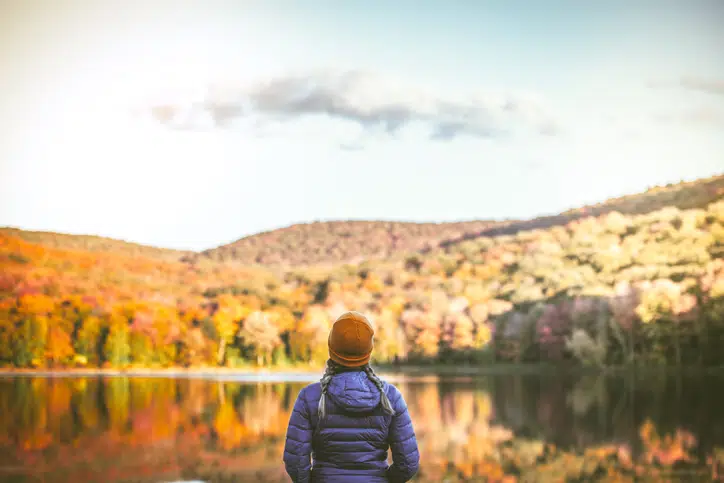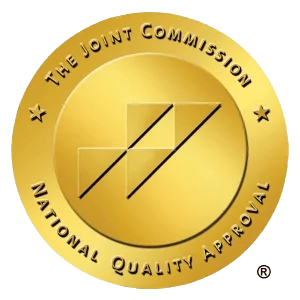Searching for help with drug and/or alcohol addiction? Call us now at (800) 643-2108.
Plan Your Night Ahead
Thankfully, Halloween isn’t until the end of the month, which means you have a whole month to decide what to do on the spookiest day of the year. Whether that means you’re attending a Halloween party or throwing one yourself, you’ll know what to expect.
If you get invited to a Halloween party, don’t be afraid to ask the host if non-alcoholic options are available. It is also good to create an escape plan if situations become too difficult and make sure you have reliable transportation home. Having a plan of action can help you avoid any unnecessary stress in the future.
Spend the Holiday With a Sober Friend
In early recovery, you might not be used to celebrating sober. Even if you’ve been sober for some time, it can be awkward being the odd one out. Spending the weekend with a sober friend not only gives you accountability but helps you feel less weird being the only one who isn’t drinking. You can bring them along to a party, dress up together, and even spend the night carving pumpkins. Learning how to have fun sober isn’t difficult when you have support – especially with someone who’s been in your shoes.
Bring Your Own Beverage
If you plan to go to a party that does have alcohol, bring something that you can drink. Having a drink in your hand will ward off any questions about why you aren’t drinking. It can also help you feel less awkward if you are worried about being the only one not drinking. Seltzer and soda can be a lifesaver. However, you can always ask the host to include some fun Halloween-themed mocktails on the menu.
Set Check-in Times
If you plan on going out, keep your support system on the same page. Set times to check in with yourself as well as the people who have your back, whether that be a sponsor, family member or sober friend you’ve brought with you. Being honest with how you feel can keep you from spiraling when stress becomes overwhelming, or you feel the urge to use drugs or drink alcohol. If you feel like the party is too much, there’s nothing wrong with leaving early.
Stay In This Year
If this is your first year sober, it might be a good idea to stay in instead of going out. Spend the holiday with your friends and family. Watch your favorite scary movies and eat candy. Turn your porch light on and hand out candy to trick or treaters. A relaxing night can still make for a fun time. Due to the rise in Covid cases, a Halloween at home might be the best option.
The changing seasons take a larger toll on your mental health than you might think. If you find yourself feeling unbearably sad during the fall and don’t know why, then it might be a more serious condition called seasonal affective disorder (SAD).
This type of disorder is more than just feeling down because the days are getting shorter, but rather a condition that can cause serious depression and may even lead to suicidal thoughts. Knowing the difference could save your life and get you the help you need.
More Than Just the Winter Blues
SAD — sometimes called seasonal depression — is a type of depression that follows the changing of the seasons. People with SAD tend to feel worse during late fall when the days become shorter but feel better during the spring when the days become longer.
SAD can completely change a person’s mood. While in the spring and summer, you might have had the energy to accomplish all you need to do, during the fall and winter, you might feel irritable and sluggish.
For some, SAD can also cause depression during the spring and summer, though it’s not as common. People who experience SAD during the warmer months experience similar symptoms to those in the winter, like feeling tired and moody.
Symptoms to Watch Out For
SAD symptoms include having low energy, disruption in sleep cycles, feeling apathetic about activities you once enjoyed, changes in appetite, and having difficulties concentrating. Additionally, you might feel irritated, hopeless, guilty, or worthless. You might even have frequent thoughts of death or suicide.
SAD symptoms in the winter include oversleeping, appetite changes leaning toward food high in carbohydrates, weight gain, and tiredness. SAD symptoms for the spring and summer can include insomnia, poor appetite, weight loss, agitation and, anxiety. These symptoms should be taken seriously as problems can worsen if not treated.
Signs that SAD has gotten worse include social withdrawal, substance misuse, problems at work and school, and suicidal thoughts and behavior.
The Causes of SAD
Though there isn’t a definitive cause, there are things that can contribute to symptoms. During the change in seasons, the reduced level of sunlight can affect your circadian rhythm, also known as your biological clock. This is the part of your body that regulates sleep. Since your internal clock is disrupted by the lack of sunlight, it also affects your mood, sleep, and hormone levels.
Another cause is a drop in serotonin levels. Serotonin is a chemical in your brain that contributes to feelings of happiness. When the amount of sun is lowered, it affects your serotonin levels and can cause depression to worsen.
Melatonin is another factor that plays into seasonal affective disorder. Melatonin is a chemical that helps you sleep. The shortening days might be signaling your brain to release more melatonin than necessary which causes you to feel sluggish during the winter.
You Might Be at Risk
Many factors play into how the seasons affect you. Your risk for developing SAD increases depending on your family history, environmental factors, and mental health disorders you might already have.
You are at higher risk for SAD if you have:
- Family history either for SAD or any form of depression
- Bipolar disorder
- Any major depressive disorder
- Schizophrenia
- Anxiety disorder
- ADHD
- Eating disorder
- Panic disorder
You are also at risk for SAD if you live far from the equator or in a cloudy region.
Depending on your comorbid mental health disorders, SAD might manifest differently. In mood disorders like bipolar, the changing of seasons might worsen your manic or depressive symptoms. Consider what you know about your mental health when seeking a diagnosis and treatment.
Treatments for SAD
There are plenty of ways to treat SAD once you’ve received a diagnosis. Phototherapy, also known as light therapy, is a common way people treat SAD during the winter months. Vitamin D supplements can also improve symptoms of SAD because they give you vitamins you miss out on during shorter days.
When you can, spend time outdoors as much as possible. Open the drapes in the office or at home to increase the amount of sunlight in the room.
Don’t Wait to Get Help
SAD symptoms can escalate if you wait on getting treatment, so it’s important to look for help right away. There’s no need to try and tough it out. Seasonal affective disorder can lead to using drugs or alcohol to cope, or leave you feeling hopeless, thinking suicide is the only option.
The first step is seeking help from a health care professional. They will ask you questions about your symptoms regarding mood changes. They’ll rule out any other possible mood disorders and then determine your treatment.
There are many options for treatment — from therapy to medication — as well as steps you can take on your own.
Seasonal affective disorder is a serious mental health condition that affects people during the fall and winter. Pay attention to your mood changes this fall and consider reaching out for help. SAD can contribute to escalated substance use if symptoms are ignored while they become unmanageable. Talk to a health care professional about your symptoms. Getting the proper treatment can help symptoms that might feel impossible to handle. If you or a loved one struggles with these mood changes during the colder months, don’t be afraid to reach out to Cornerstone Healing Center. We offer counseling services to all of our clients. If you’re concerned that you or your loved one might have developed a substance use disorder due to seasonal depression, contact our facility for treatment. Reach out before it’s too late. To learn more about the services we offer — from partial hospitalization to intensive outpatient — contact us at (800)-643-2108 today.






